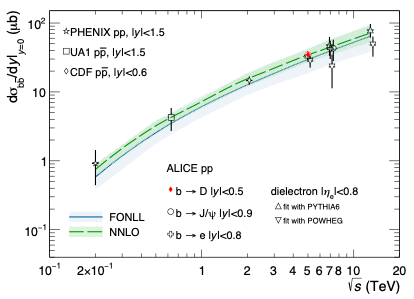
Measurements of the production of hadrons containing charm or beauty quarks in proton--proton collisions provide an important test of Quantum Chromodynamics (QCD) calculations. They also set the reference for the respective measurements in heavy-ion collisions.
The excellent track and decay-vertex reconstruction capabilities of the ALICE experiment, together with machine-learning techniques for multi-class classification, were exploited to single out the signal of non-prompt D mesons (produced in beauty-hadron decays) from that of prompt D mesons (produced in the charm-quark fragmentation) and the combinatorial background. The production of non-prompt D0, D+, and Ds+ mesons has been measured, as a function of the transverse momentum, at midrapidity in proton--proton collisions at √s = 5.02 TeV. The estimated bb production cross section per unit of rapidity is in good agreement with both calculations at next-to-leading-order with next-to-leading logarithm resummation (FONLL) and recent and more precise calculations including next-to-next-to-leading-order (NNLO) QCD radiative corrections.
Further reading
ALICE Collaboration 2021 https://arxiv.org/abs/2102.13601
